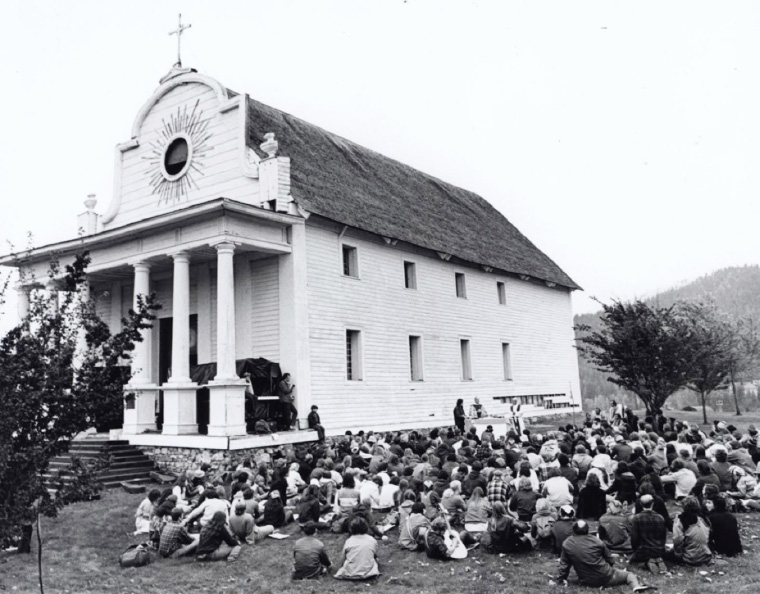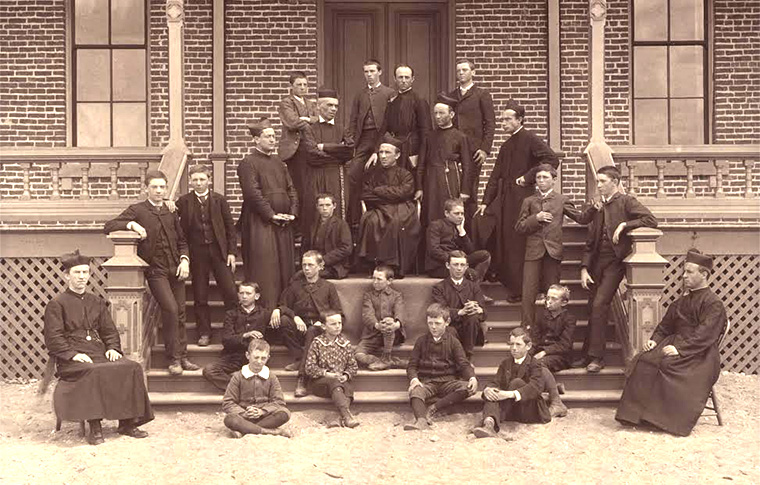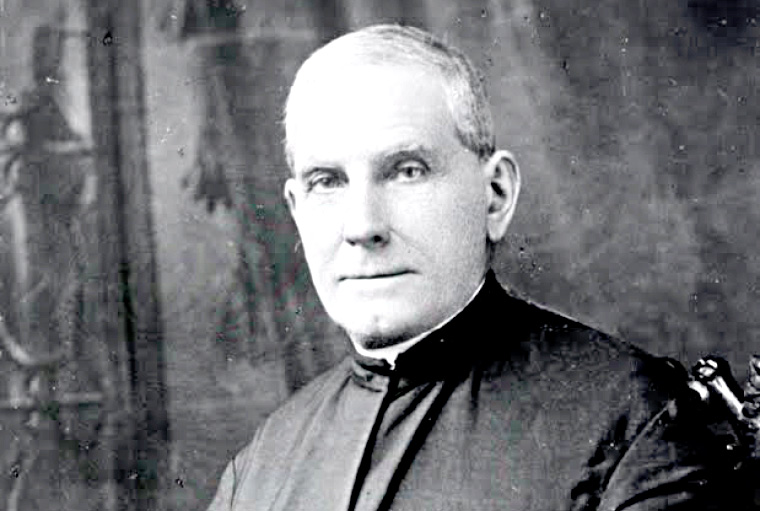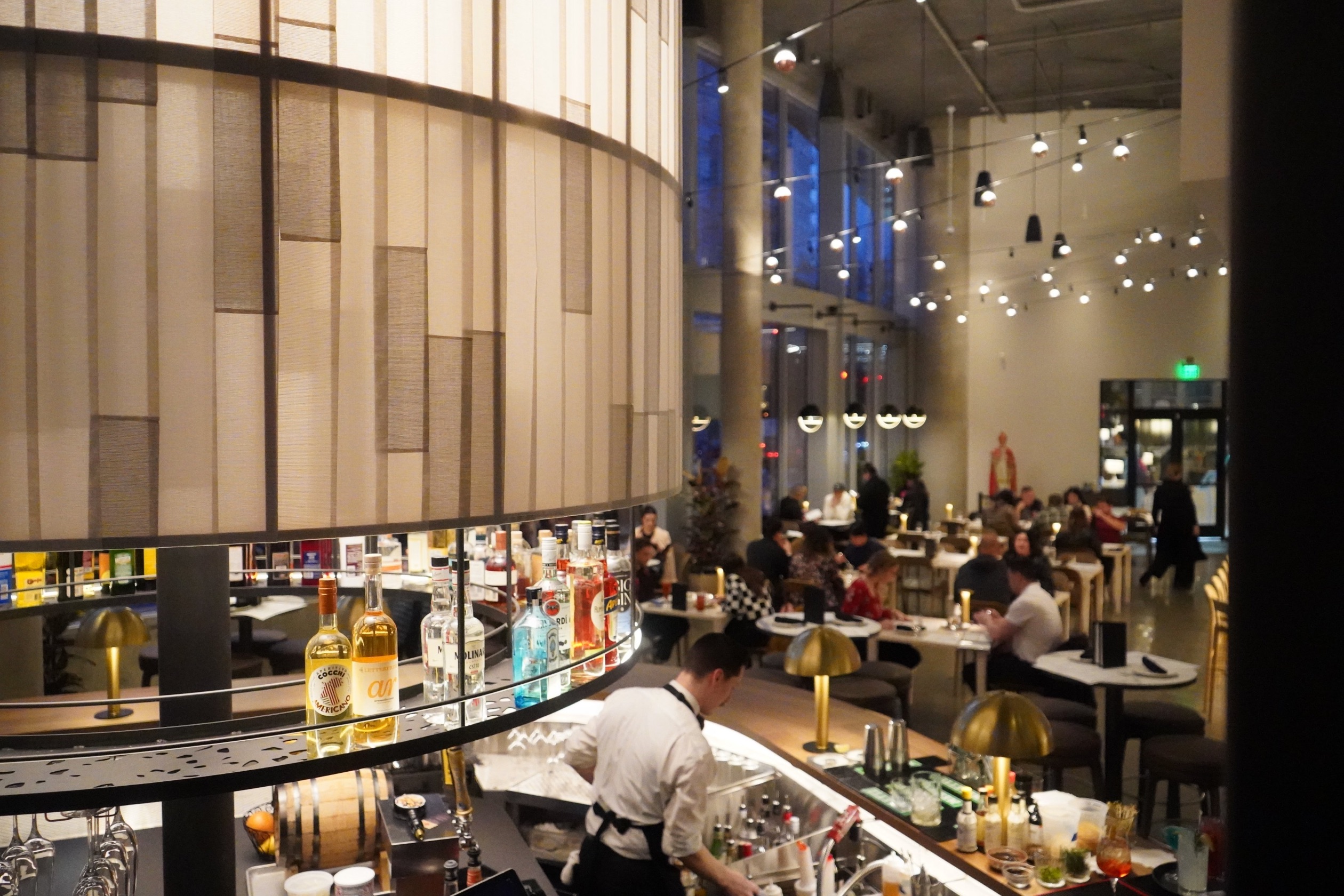In 1881, a stash of silver dollars, 936 of them to be exact, bought 320 acres of land overlooking the Spokane River in eastern Washington. At the time of the sale, the property was described as “the old piece of gravel near the falls.”
Six years later, Gonzaga College opened its doors to a small group of boys and a slightly larger group of Jesuit faculty. On opening day, the school had seven students; by the end of the first year, that number had increased to 20.
The land purchase and the founding of Gonzaga College were the work of Father Giuseppe Maria Cataldo, a pioneer missionary serving the Pacific Northwest. For 60 years, Cataldo established or served at missions and churches in Idaho, Washington, Montana, Oregon, Alaska and California. His long career of missionary service helped inspire his nickname, “Last of the Black Robes.”

Cataldo was born in Terrasini, Sicily on March 17, 1837. As a child, he was very sickly and on death’s doorstep several times. At age 15, he entered the Jesuit Society in Palermo and was ordained a priest a decade later.
Known for his proficiency with languages, Cataldo requested an assignment to America to improve his English. At first, he served in Boston but the harsh winters were difficult for him, and he transferred to California where he completed his Jesuit training.
He later lived among several Native American tribes in the Pacific Northwest, becoming an accomplished linguist. In all, he mastered some 20 European and Native American languages, and wrote one of the first books ever published in the Nez Perce language.
His linguistic facility allowed him to assist in peacekeeping activities both during and after the Nez Perce uprising in 1877, which pitted Chief Joseph against U.S. soldiers and was the final Indian war in the region. During the uprising, Cataldo became so involved with Indian affairs that a federal Indian agent accused him being an accomplice to Chief Joseph. So influential was his time among the tribe that when the Nez Perce were asked their religion, they reportedly responded, “We believe in Cataldo’s teaching and that is the only teaching we wish to have.”

Cataldo opened a small schoolhouse at St. Michael’s Mission near Spokane, Wash., which served both Native American and white students. To expand the mission, he purchased two parcels of nearby land. The larger parcel, north of Spokane, served as the new home of St. Michael’s Mission, and the second parcel of 40 acres closer to downtown Spokane became the site of Gonzaga College.
Cataldo selected the site because it was central to the Jesuit missions scattered throughout Washington, Idaho and Montana. When his Jesuit superiors in Rome questioned his plans to build a college there, Cataldo defended himself by saying, “I acted hastily but not impulsively.”
Cataldo proved to be a terrific fundraiser. He encouraged prominent Spokane businessmen to donate money to the school by promising that the faculty would include “an able teacher of physics and chemistry and someone well qualified to teach English literature.” A decision was made to name the school in honor of Saint Aloysius Gonzaga, a northern Italian who died in 1591 at the age of 23 and is the patron saint of young students.
In May 1885, the Spokane Evening Review called the construction a “new ornament to our lovely town,” adding that the structure would attract “many new families who have delayed their coming here on account of the absence of a Catholic church and college.” Several months after the school opened in 1887, the town’s Morning Review wrote: “The building is unquestionably the most commanding and imposing one in the Northwest.” Although Cataldo intended to educate Indian boys at Gonzaga, his plans were overturned and the school’s inaugural class contained only white students.

Today, Gonzaga University has grown far beyond the initial 40 acres, with more than 105 buildings dotting the 131-acre campus. In 2013, its diverse student body included nearly 7,700 young men and women. Some of its more celebrated graduates are singer Bing Crosby, former speaker of the U.S. House of Representatives Tom Foley, and former Washington governor Christine Gregoire.
Each fall, the university remembers the spirit and foresight of Father Cataldo with a 10.5-mile pilgrimage to the historic Mission of the Sacred Heart, known as Cataldo Mission, in northern Idaho. Some 200 students, faculty and others make the wilderness trek. Upon their arrival, the pilgrims are joined by members of the Coeur d’Alene tribe.
Despite battling poor health throughout his life, Cataldo served the Northwest’s Native Americans until his 90s. Nearing the end of his life, he was asked to name the best piece of advice he had received during his long career. He replied: “I have met only one good prophet, the missionary who told me in 1865 that I might not live long elsewhere, but…among the Indians and with a Cayuse pony beneath me, I would reach old age.”
Cataldo died in 1928 at the age of 91 on the Umatilla Indian Reservation in Pendleton, Ore., and is buried in Spokane. A town in Idaho and a dining hall on the Gonzaga campus are named after him.




























